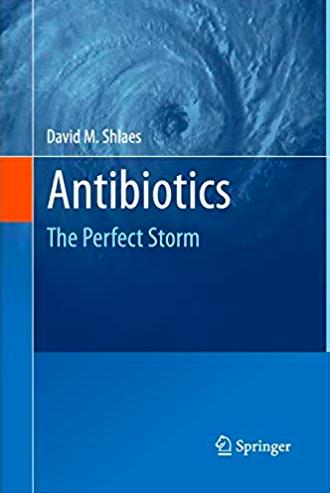The science of discovering and developing new antibiotics is difficult enough. But antibiotics present an additional, unique problem: economics. It is very difficult for a pharmaceutical company to even recoup its R&D costs because of a small market, which is mostly hospital use. Some kind of subsidy is necessary. ACSH advisor Dr. David Shlaes examines whether Medicare can help, and to what degree.

The key problem for many struggling with the treatment of resistant infections and a paltry pipeline of new antibiotics has been the lack of a return on investment for companies trying to discover and develop new antibiotics. In hospitals, since these infections may be rare for a given center, there is a reluctance to place expensive new antibiotics on formulary and stock them given a limited pharmacy budget. This may result in a delay in adequate therapy or the substitution of older, cheaper and toxic drugs like colistin for newer, more expensive, more effective and less toxic therapies like ceftazidime-avibactam. This concern is borne out by market data on antibiotic use in the US.
Recently the Centers for Medicare and Medicaid Services (CMS) launched policies meant to provide incentives for hospitals to use newer, expensive, more effective and less toxic antibiotics for the treatment of infections caused by resistant pathogens. Obviously, this will only apply to the US. CMS provides a two-pronged approach. Hospitals can now apply to receive reimbursement of 75% of the drug cost beyond the usual diagnostic related group (DRG) reimbursement. The previous reimbursement allowed being only 50% under their New Technology Add-on Payment (NTAP) program. (The DISARM bill currently under consideration in Congress would allow a 100% reimbursement for drug charges for the treatment of resistant infections – but I am not sure if that would have to go through the NTAP application procedure or not). In addition, hospitals can now classify resistant infections under CMS’ “complicated conditions” rubric allowing for a higher reimbursement than would be obtained under a usual DRG. For a more complete review of this, see this article.
Lots of really smart people are very excited about these new “incentives.” Either I’m not so smart or someone is out of touch with reality. Being a data-driven person, I reached out to five hospitals. Four are large, academic, multi-hospital groups. One is a small hospital that is part of such a group but that functions semi-autonomously. People I contacted included a CMO (Brad Spellberg of USC), two antimicrobial stewardship directors, a pharmacist and an infection prevention director. OK. This is not an extensive survey, but so far the response has been unanimous.
I posed two questions:
1. Will these (new CMS moves) measures make any difference to formulary position or prescribing patterns in your hospital?
2. If there were 100% reimbursement instead of the 75% CMS currently proposes for expensive antibiotics and as described in the DISARM Act before Congress, will that make a difference?
I have received four responses – all from large centers. All stated that the new CMS incentives would NOT change current practice in their institutions. Only one center stated that if they consider placing the new expensive antibiotics on their formulary, these incentives would help their argument to the hospital administration. Currently, their resistance rate is so low that they haven’t considered it necessary to have these drugs on their formulary (see below).
1. Resistance in two of the centers I polled is rare. This is consistent with a recent study of “difficult to treat” infections in the US where only 1% of bacteremias caused by Gram-negative pathogens were considered to fall into this definition. Resistance across the US is spotty. The latest CDC geographic data is old and comes from 2011-2014 and can be seen here. But for these centers, there is no urgency to place newer agents on their formularies.
2. In several centers, the antimicrobial stewardship group and/or individual physicians are given considerable autonomy in prescribing and the expensive new drugs are already being used in the absence of any incentives.
a. This suggests that the rarity of resistance is more important in determining the market than the expense of new drugs in many centers.
b. Physicians generally have no idea what DRGs or CCs are nor do they know about the costs of antibiotics. They prescribe drugs targeting their individual patients’ needs without considering DRGs or other administrative issues.
3. The NTAP application process is burdensome and many hospitals hesitate to use it for that reason (as I’ve heard from previous inquiries).
4. One center is skeptical that the complicated condition reimbursement will fully cover their costs for resistant infections. (But I would think that any additional remuneration would at least be an improvement)
5. In the case of Brad Spellberg’s hospitals at USC in California, 80% of their patients are covered by MediCal, not Medicare. So these incentives would not apply to them anyway. Others note that private insurers might not follow CMS’ lead here either.
I am convinced by the market data that patients are still being treated with colistin/polymyxin in lieu of new antibiotics. I think this is partly because expensive newer agents don’t get on hospital formularies. If higher reimbursement will encourage some hospitals to change their approach in a positive way, that would be great. But the responses to my small survey were not terribly encouraging in this regard.
CMS is to be commended for trying to address the antibiotics market failure by providing policies meant to incentivize appropriate use of newer antibiotics in spite of their expense. Nevertheless, based on the responses I received, it is not at all clear that the CMS incentives will significantly increase formulary inclusion of the newer antibiotics or their use by physicians – therefore, it is not at all clear that these moves will work as intended by CMS. As Brad noted to me, it seems like CMS and the pundits advising them failed to actually speak to physicians and pharmacists on the front lines to understand what might and what might not work.
My view remains that in order to fix the broken antibiotic market we will need a very significant pull incentive such as a market entry reward or a transferable exclusivity voucher.
#Reprinted with permission from Dr. Shlaes' blog Antibiotics - The Perfect Storm
Category



